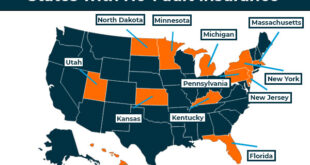Variable Rate Loan: Know Before Choosing One Variable rate loans are a popular financing option for many borrowers. They offer flexibility, potentially lower initial costs, and the chance to save as interest rates fluctuate. However, understanding the intricacies of variable rate loans is crucial to making an informed decision. In this article, we’ll delve into the details of variable rate loans, discuss their advantages and risks, and provide actionable tips to help you decide if this type of loan suits your needs.
What is a Variable Rate Loan?
A variable rate loan is a loan where the interest rate changes over time, typically based on a benchmark interest rate, such as the Federal Reserve rate or LIBOR (London Interbank Offered Rate). Unlike fixed-rate loans, where the interest remains constant throughout the term, variable rates fluctuate depending on market conditions.
How Does a Variable Rate Loan Work?
- Initial Period: Most variable rate loans begin with a fixed interest rate for a set period, providing some initial stability.
- Adjustment Period: After the fixed period, the rate adjusts periodically (e.g., monthly, quarterly, annually).
- Rate Cap: Many lenders include a cap to limit how much the interest rate can increase during each adjustment and over the loan’s lifetime.
Advantages of Variable Rate Loans
- Lower Initial Rates: These loans often start with lower rates compared to fixed-rate loans, reducing initial costs.
- Potential Savings: If interest rates decrease, borrowers can benefit from reduced payments.
- Flexibility: Ideal for short-term borrowing needs or when you anticipate rate drops.
- Options for Refinancing: You can refinance to a fixed rate if rates begin to rise.
Risks of Variable Rate Loans
- Unpredictable Payments: Monthly payments can increase significantly if rates rise.
- Budgeting Challenges: Fluctuating payments can make long-term financial planning difficult.
- Higher Lifetime Costs: Over the loan term, variable rates might lead to higher overall costs compared to fixed rates.
Who Should Consider a Variable Rate Loan?
- Short-Term Borrowers: Those planning to pay off the loan quickly or refinance.
- Rate Watchers: Borrowers who keep an eye on market trends and anticipate rate decreases.
- Low Initial Cost Seekers: Individuals needing a low starting rate for affordability.
How to Choose the Right Variable Rate Loan
- Understand the Index: Learn which benchmark the lender uses and how it influences the rate.
- Evaluate Caps: Ensure the loan has reasonable caps to prevent excessive rate increases.
- Review Terms: Understand the frequency of adjustments and the initial fixed period.
- Compare Options: Use online calculators and compare offers from multiple lenders.
10 Tips for Managing a Variable Rate Loan
- Monitor Market Trends: Stay updated on interest rate changes.
- Create a Financial Cushion: Save for potential rate hikes.
- Choose Loans with Caps: Protect yourself from steep rate increases.
- Refinance Strategically: Switch to a fixed rate if variable rates rise significantly.
- Understand Loan Terms: Read all fine print before signing.
- Work with a Trusted Lender: Choose a reputable financial institution.
- Budget for Fluctuations: Account for potential payment increases.
- Keep Credit Healthy: A strong credit score can secure better refinancing options.
- Ask About Adjustment Frequency: Choose a loan with less frequent adjustments for stability.
- Seek Professional Advice: Consult a financial advisor to evaluate suitability.
10 FAQs About Variable Rate Loans
- What is the main difference between fixed and variable rate loans?
Fixed loans have constant rates; variable loans fluctuate based on benchmarks. - Are variable rate loans risky?
They can be if rates rise significantly, but caps and refinancing options mitigate some risks. - How often do rates change?
Typically, rates adjust annually or quarterly, depending on the loan terms. - What happens if rates drop?
Borrowers benefit from lower payments when rates decrease. - Can I switch from a variable to a fixed rate loan?
Yes, refinancing allows you to lock in a fixed rate if needed. - Are variable rate loans cheaper in the long run?
They might be if rates remain low, but they could become costly if rates increase. - Do all variable rate loans have caps?
Most do, but it’s essential to verify with your lender. - What is the typical initial fixed period?
It varies, commonly between one to five years. - How are rate adjustments calculated?
Adjustments are based on the benchmark rate plus the lender’s margin. - Are variable rate loans suitable for everyone?
No, they are ideal for borrowers comfortable with potential rate changes.
Conclusion
Variable rate loans offer an appealing option for borrowers seeking low initial costs and flexibility. However, they require a solid understanding of the associated risks and an ability to adapt to changing financial conditions.
By carefully evaluating terms, monitoring market trends, and budgeting for fluctuations, you can make variable rate loans work in your favor. Whether you’re planning for short-term financial needs or aiming to leverage potential rate decreases, understanding the dynamics of variable rate loans is key to optimizing your borrowing experience. Always consult financial professionals and thoroughly compare your options to ensure the best decision.
 Gerbang Finance
Gerbang Finance

